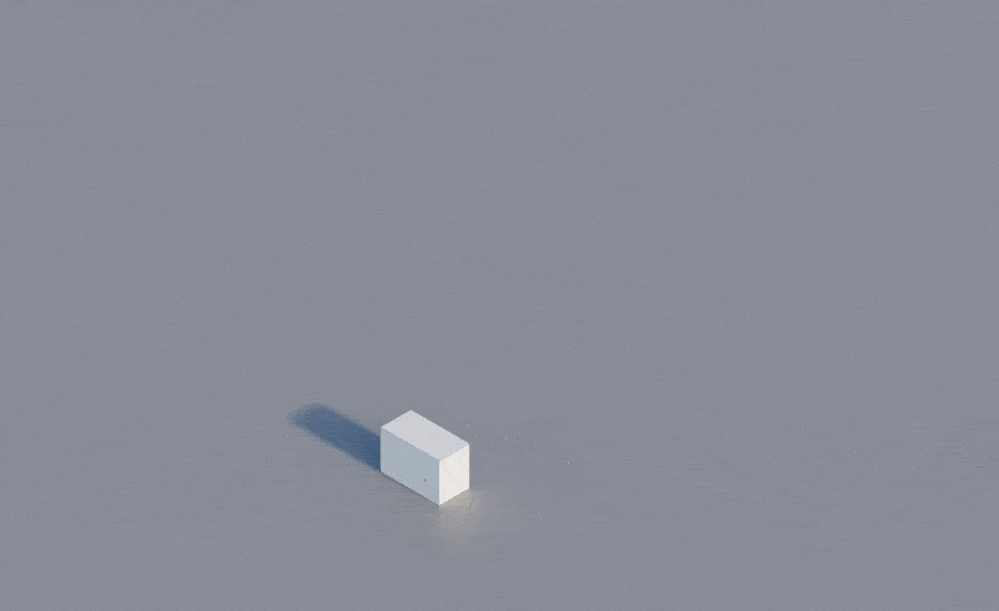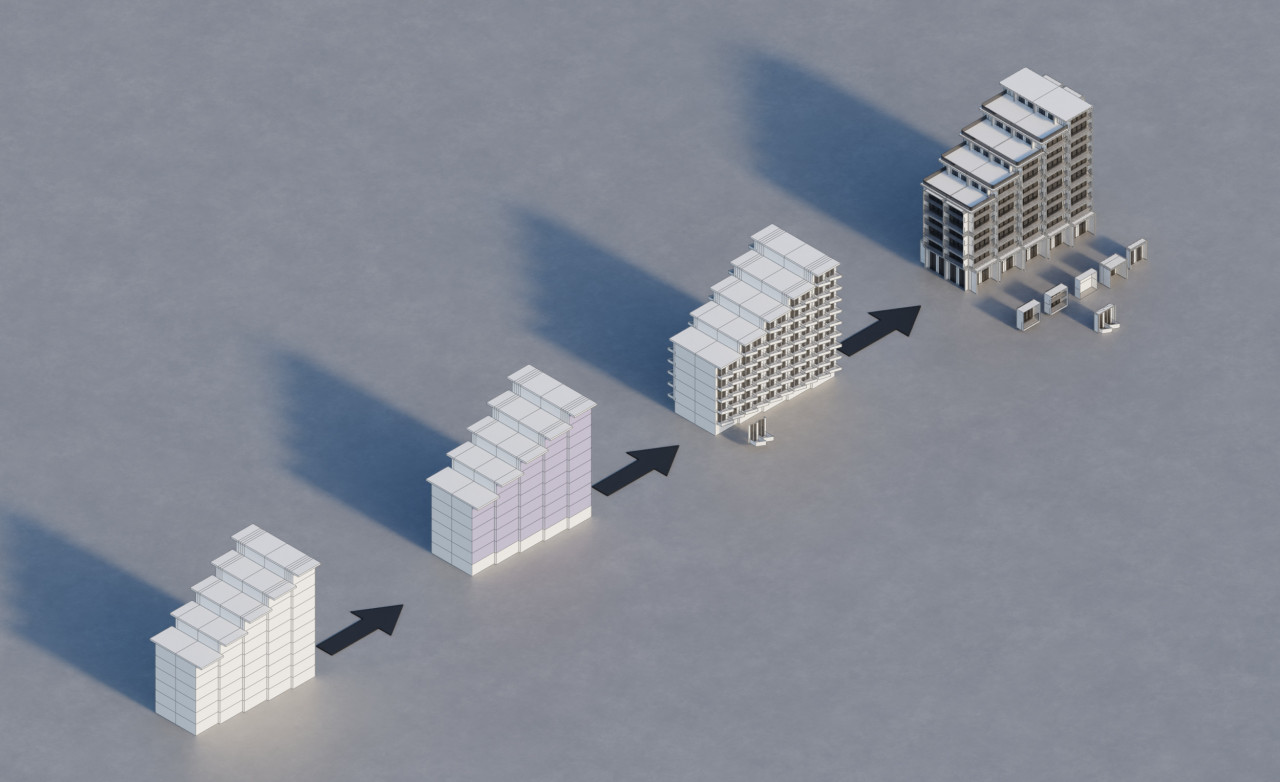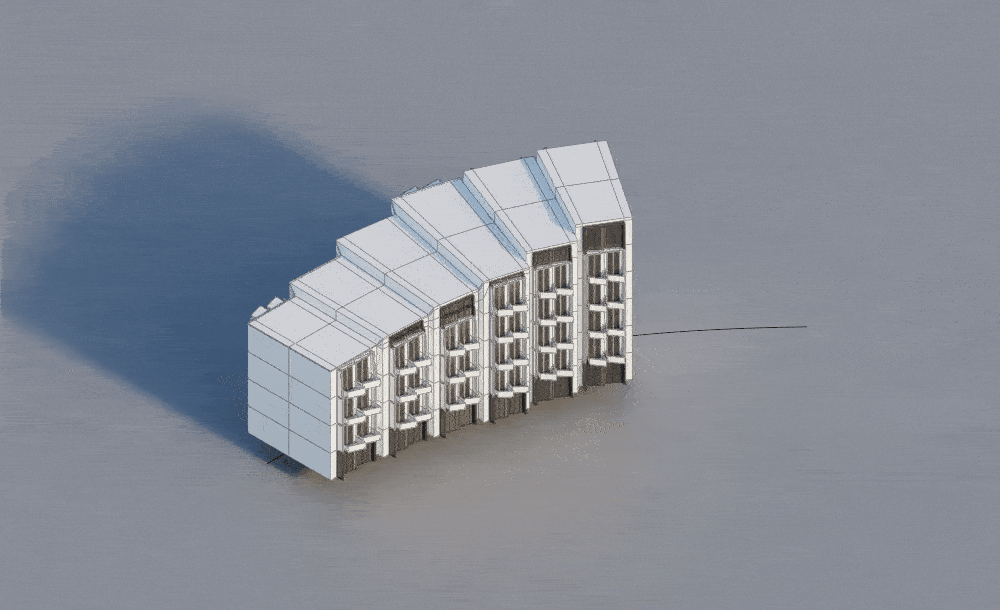Parametric Building Forms Course
In this course, you will learn specific strategies for generating numerous architectural massings with ease.
You will achieve this new knowledge by creating massings and concepts for a staggered building, mimicking the typical design ideation process that most professionals and students utilise for early stages of projects.
The goal of this course is to equip you with a series of workflow strategies that enable you to ideate and bring more of your ideas out more quickly and effectively.
At a glance: Learn a multi-step concept design workflow for generating staggered architectural massings, and developing them into presentable concepts
Topics: procedural parametric modeling, architectural modeling, Geometry Nodes, tessellations with the Tissue add-on
Software: Blender
Duration: 3 hours worth of lessons of recorded sessions, + live Q&A sessions. Videos include english subtitles.
Preview: You can freely access the first lessons of the course below in the curriculum
Experience: Covers up to intermediate topics. Suitable for beginners. Basic Blender understanding preferred
Includes: Video lessons, Blender files, and assignments
Your instructor: Dimitar Pouchnikov, AIA, professional architect in London with over 12 years experience working on international projects, Full Bio below
|
You will learn how to create quick massings both non-destructively and destructively in edit-mode. You will learn multiple procedural workflows that allow instant adjustments of massings without having to manually redo work. These workflows will empower you to quickly and easily adopt and modify massings, replicating the typical contextual, programmatic, team, or client-based adjustments that drive the design evolution. |
The procedural workflows encompass techniques utilising multiple modifiers, including Geometry Nodes. The edit-mode workflows teach you how to modify your geometry based on topological adjustments like understanding where it insert loop cuts, splits, connecting vertices, and others. |
|
|
Throughout the course, most of the emphasis is placed towards procedural workflows. Yet, it is equally as important to have prime knowledge of modifying topology of any given massing that is sometimes essential for further development.
|
Part 2 - Architectural concepts
|
After you learn the techniques for creating quick architectural massings, we will investigate turning some of the massings into a more developed architectural concepts, portraying a sense of scale and proportion. Will still part in early ideation phase, these architectural concepts will provide snapshots to understand and communicate whether the project is evolving in the desired direction, without needing to resolving all the project parameters. |
|
In this phase, we first will look at modifying a massing to create topological continuity. This is both easier in some respects and more difficult. It is easier because sometimes to process of modifying geometry directly is more straightforward. Yet, in the initial highly iterative design process, where numerous massings need to be generated quickly, manually adjusting the topology for multiple options becomes a time consuming and repetitive process. |
|
|
Thus, second, we will investigate procedural techniques of generating architectural concepts from the earlier sets of massings. The intent is to provide you with highly creative workflows by reducing the manual process of editing the massings to a minimum. In this step-by-step process, the techniques become more advanced where, eventually you will learn how to further streamline the process with Geometry Nodes into an almost completely automated massing and architectural concept generation process. |
Throughout the course, we will be utilising the Tissue addon to tessellate panel components onto the massings. This step is a further optimisation process that helps reduce the time you need to spend on creating options so you can get to the right one quickly and efficiently.
Presenting work is as important as generating the work. Hence, why we believe it is as essential to provide knowledge for you that teaches you how to present concepts effectively. This includes creating hidden-line type renderings, isometric cameras, and laying your models in a manners that showcases your design process thinking to the stakeholders (clients, managers, professors).
To help you learn more optimally and progressively, the course includes assignments that allow you to practice with your own ideas beyond the material presented. The best work that is submitted will be showcased throughout this course and on social media with credits.
Furthermore, you will gain access to an exclusive community of other students like you where you can ask questions and showcase your work. Additionally, you can comment directly on each lesson and you will have access to email support
The course includes automatically generated subtitles which can be searched in the video player. This his highly useful when you like to go back and find a reference for something you remember watching initially.
This course also includes live sessions where you can ask your questions directly to the instructor. The live sessions will be recorded and uploaded to the course curriculum so even if you missed a live session, you would be able to recap and learn from other students' questions.
By the end of this course you will
- Reduce the time you spend on creating massings in the earliest ideation phases of design List item two
- Enable more creative output of your ideas by learning how to work more effectively with Blender's inherent procedural workflows List item four
- Produce your designs more efficiently with Geometry Nodes and the Tissue addon.
- Compellingly record and present your design processes.















